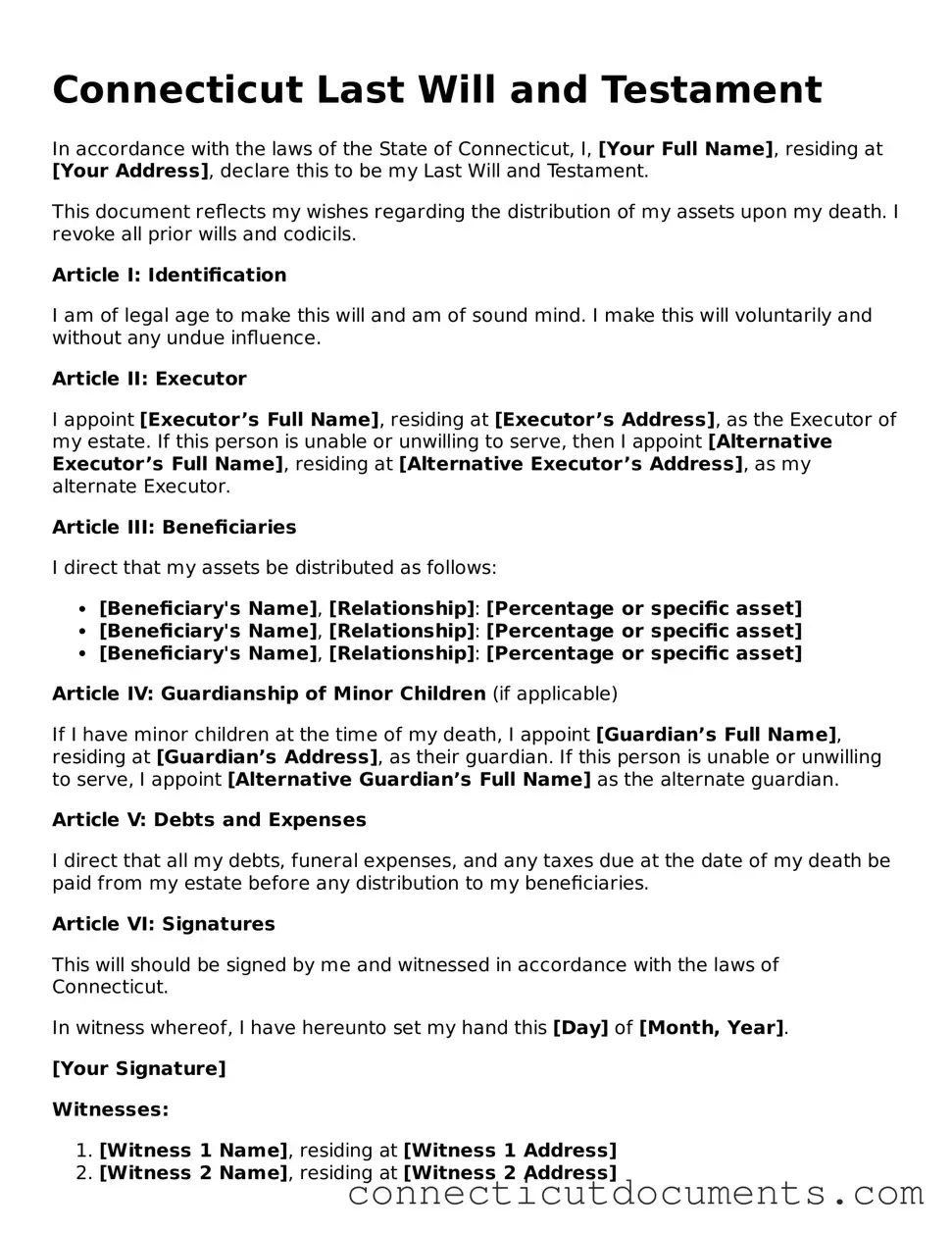The Connecticut Last Will and Testament is similar to a Living Will, which outlines a person's wishes regarding medical treatment in case they become unable to communicate. While a Last Will focuses on distributing assets after death, a Living Will addresses healthcare decisions during a person's lifetime. Both documents serve to express individual preferences, ensuring that one's desires are honored, whether in matters of property or health care.
Another document that shares similarities is the Durable Power of Attorney. This legal tool allows someone to designate another person to make financial or legal decisions on their behalf if they become incapacitated. Like a Last Will, it provides clarity and direction, ensuring that someone trusted manages affairs according to the individual’s wishes. Both documents are crucial for planning and protecting one's interests.
The Revocable Trust is also akin to a Last Will. It allows individuals to place their assets into a trust during their lifetime, which can then be distributed to beneficiaries after their death. While a Last Will goes through probate, a Revocable Trust typically bypasses this process, providing a more private and efficient way to manage and distribute assets. Both documents aim to facilitate the transfer of property according to the individual's desires.
Similarly, a Healthcare Proxy grants a trusted person the authority to make medical decisions on behalf of someone who is unable to do so. This document complements a Living Will by designating a specific individual to ensure that healthcare choices align with the person's values and preferences. Both are essential for making sure that healthcare decisions reflect an individual's wishes.
The Codicil is another document related to a Last Will. It serves as an amendment or addition to an existing will, allowing individuals to update their wishes without creating an entirely new document. This can be useful for minor changes, such as adding or removing beneficiaries. Both documents ensure that a person's final intentions are clear and up-to-date.
In situations involving property transfers, understanding different legal documents is essential, and for those interested in real estate transactions, utilizing a Quitclaim Deed form can simplify the process, especially when dealing with family-related property issues or to clear title defects.
A Letter of Instruction is also similar, though it is not a legal document. It provides guidance to loved ones about personal matters, funeral arrangements, and the distribution of sentimental items. While a Last Will addresses the legal distribution of assets, a Letter of Instruction offers a more personal touch, ensuring that important details are communicated effectively.
Lastly, a Prenuptial Agreement can be compared to a Last Will in that both documents deal with the distribution of assets. A Prenuptial Agreement is created before marriage to outline how assets will be divided in the event of a divorce or separation. While a Last Will focuses on post-death asset distribution, both documents help individuals clarify their intentions regarding property and financial matters.
